For most people, chickens are just chickens. This is especially true for city people. But there is a significant difference between the chickens living on a farm. Roosters and hens have vastly different roles – especially if you need the eggs. Read on to learn more about it and how to tell the difference between them.
Male chickens are called roosters, and female chickens are called hens. Telling roosters and hens apart as adults is easy, but determining the sex of a newly hatched or days-old chick (called sexing) is a specialized skill that requires development.
Over the years, many methods have been used to determine chicken gender. Some of them were doomed from the start, but some proved accurate. So, how do we tell the difference between a rooster and a hen, and more importantly, how can we do it by ourselves?
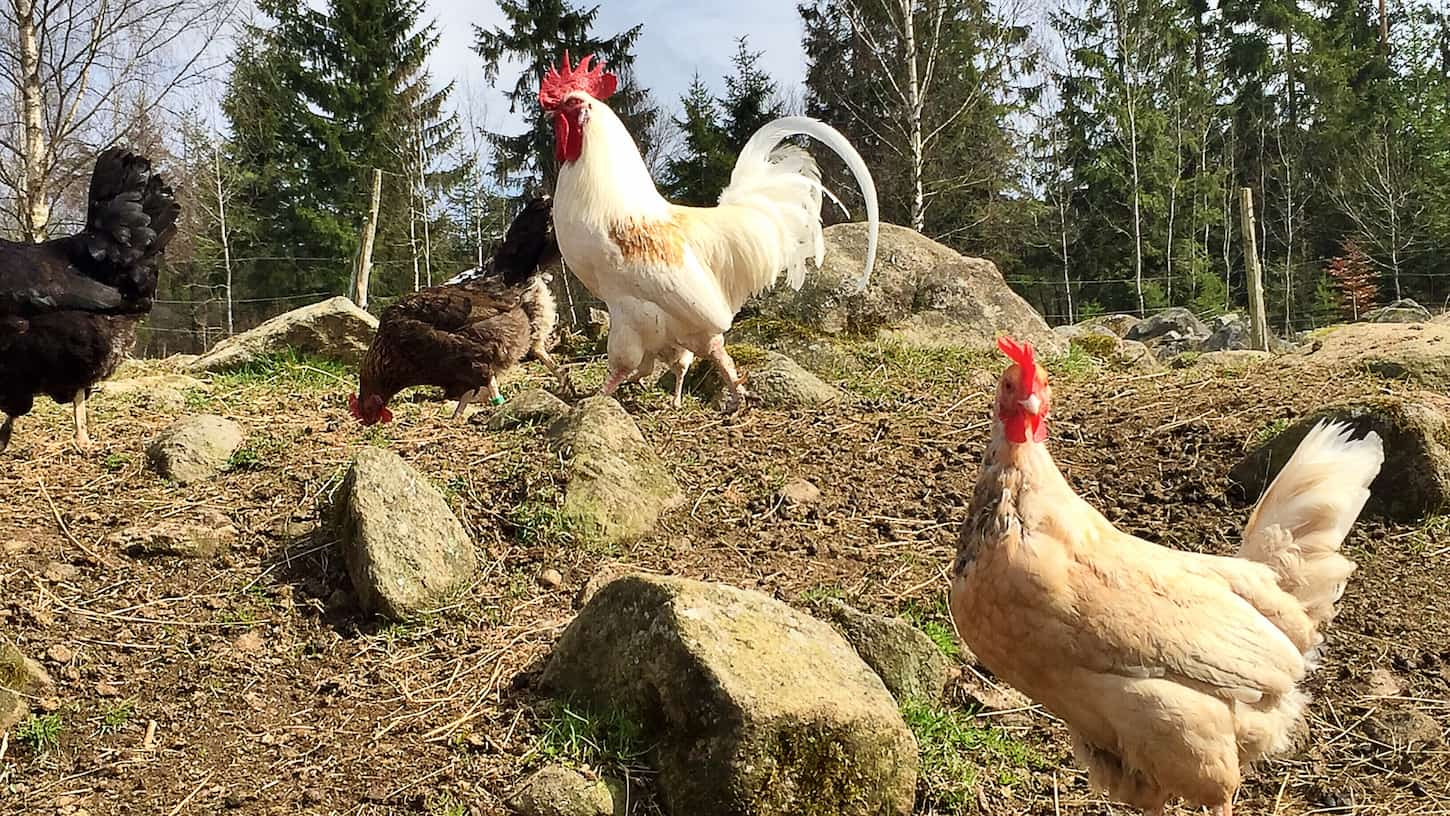
What Is a Sexed Chicken?
Experts consider chickens as “sexed chickens” after experts determine their gender. Chicks that aren’t sorted by gender are called a “straight run.” Chicks sorted by gender are labeled as “sexed chickens,” along with their gender.
“Sexing” is a term used to sort male from female chickens. Chicks are tricky little animals because they don’t have visible sex organs. They’re all internal, on both the males and females.
Let’s use this diagram to help make things clearer. What we can see on the outside are feathers, beaks, more feathers, and the cloaca. Inside the cloaca is the vent. See how all the reproductive organs (this diagram is a hen) are inside?
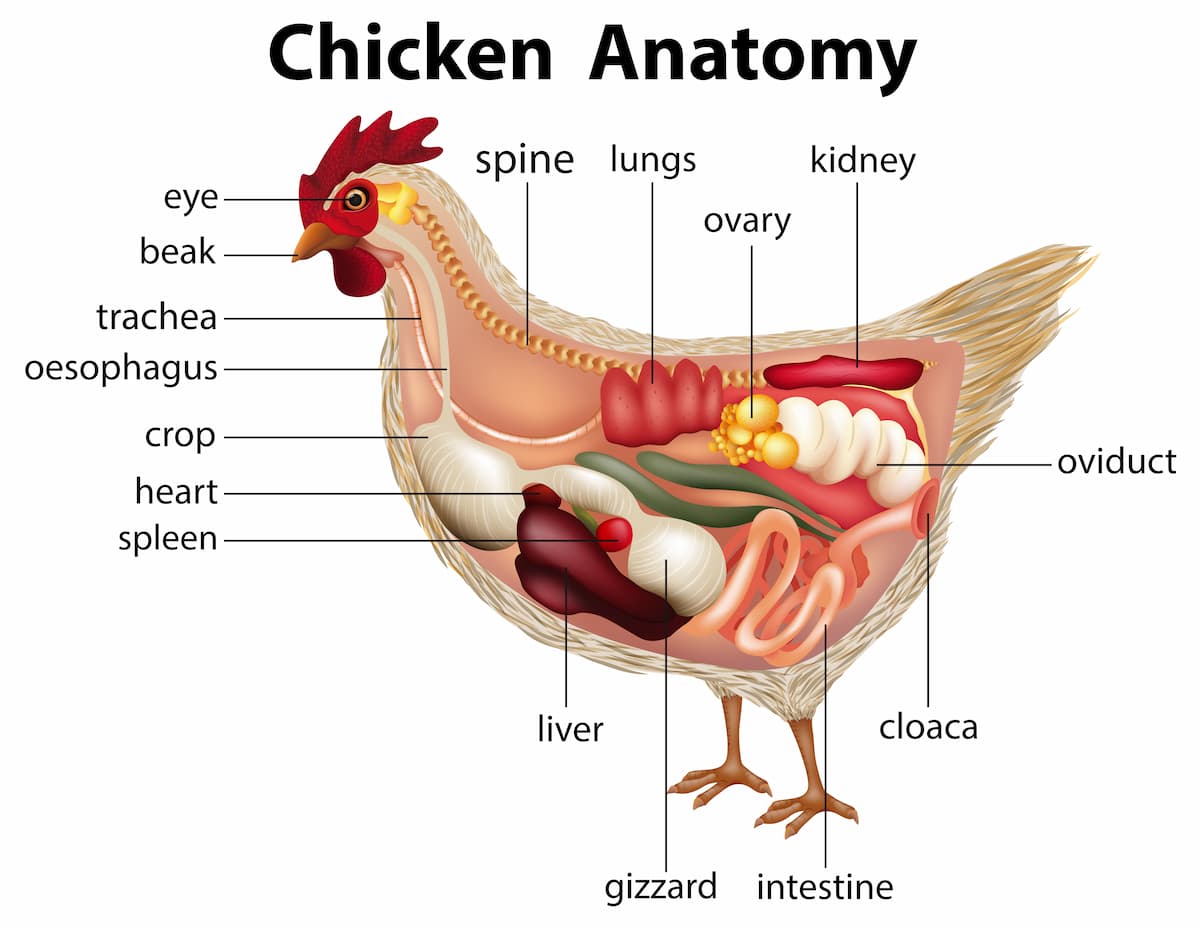
As such, the only way to “see” a chicken’s reproductive organs is by looking into (or feeling inside of) the chicken’s vent (the only exit option for a chicken).
Professionals can accurately determine the chicken’s gender using this “vent method.” Of course, other methods exist, but we will return to that topic later.
Autosexing is a term used for breeds of chickens where females and males hatch out with diverse colors and markings. For example, female and male chickens can hatch out in distinct colors. That makes sexing the chickens much easier because they look different and distinct.
How Is Chicken Gender Determined?
Various methods determine chicken gender by verifying the chicken’s biological reproductive function. The primary verification method is called the vent method, and it can only be done by a professional chicken sexer.
Wondering why chicken gender is important? What is the big deal? Well, for starters, roosters often aren’t allowed in suburban areas. Also, female chickens produce eggs, while people tend to use male chickens for meat.
A lot of people ask, Why Are Meat Chickens Female? – enough so that I wrote that article explaining when it is (and when it’s not) the case.
How to determine a chicken’s gender is interesting. The Japanese were the first to invent the vent method. There are other methods that amateurs can use, although the vent method is the most trustworthy because the chicken sex organs are inside and invisible to the untrained eye.
Determining chicken gender is a challenging task, especially with some breeds. Nevertheless, some ways and methods are good pointers to whether a chick is a rooster or a hen.
Vent sexing method
The vent sexing method is the most reliable and accurate way to determine the chicken’s gender. However, it is essential to emphasize that only a trained chicken sexer can use this method.
When a chick is one day old, a chicken sexer takes the chick in his hand and turns it upside down. Then, with another hand, they spread open the chick’s vent, examine the sex organs, and determine the chicken’s gender.
Vent sexing is delicate and sensitive; it could be fatal for the chick when done incorrectly. This is why you should never try it unless you’ve got the proper training.
For example, ain’t no way I’m going to vent-check a chick. I’m not trained.
If you want to know more about how to vent-check a chick, this YouTube video explains it fairly well.
Although the vent method on the surface seems simple, it is not. It takes a lot of practice to perfect it. Leave this method to the professionals. Here are a few other ways we amateurs can safely use when determining chicken gender.
Feather sexing method
The feather sexing method is a straightforward method based on feather features between the female and male chick in certain breeds. Male and female chicks of these certain breeds have different feather features that make this possible. This method won’t work for every breed.
People use this method when the chick is one day old. This is because female chicks develop their wing feathers before hatching, while male chicks do it after hatching.
Female and male wing feathers look entirely different. In male chicks, wing feathers are the same size, while female chicks aren’t.
Even though the feather sexing method is straightforward and basic, it requires a steady and calm hand. A person who examines the chick’s feathers must be careful and gentle. Otherwise, the chick’s wing can be permanently damaged.
Also, there’s room for error. So keep that in mind.
What breeds can be feather sexed?
The feather sexing method is a sex-linked trait; not every chick can be feather sexed. In addition, this method works only if the chick’s mother is of a breed that slowly grows feathers and the father is of a breed that rapidly grows them.
The rapid feathering breeds are Campine, Marans, Andalusian, Minorca, and Leghorn. The slow feathering breeds are Plymouth Rock, Sussex, Rhode Island Red, Wyandotte, and Cochin.
Secondary sex features
If we are proud owners of backyard chicks, there are different ways to determine their gender. We must be patient until their secondary sex features start to show, like their combs, feathers, wattles, leg size, behavior, etc.
Of course, how long we’ll have to wait depends on the breed of our chicks, but generally, it’s between four and six weeks.
Wattles, combs, and spurs
A comb is a red crest on a chick’s head. Male and female chicks have them, but there is a difference. A male chick will develop a brighter and larger comb than the female. They will also develop a much larger wattle, an elongated skin under the beak.
Roosters will also grow spurs on their legs. They use these to defend the flock from predators and to assert dominance. Hens occasionally grow spurs, but that’s the exception rather than the rule.
Feathers
There are various kinds of feathers on a chick and fully grown chickens.
- For example, hackle feathers are neck feathers.
- On a male chick, hackle feathers are pointier and longer.
Depending on the breed, tail feathers vary, but male chicks have flamboyant, longer, and pointier tail feathers. In addition, male chicks also have pointed and long saddle feathers on their back.
Leg size
Male chicks have much thicker legs than females. Depending on the breed, a male chick will develop sharp and pointed spurs above the toes. As the chick grows, so the spurs grow and eventually could reach more than one inch in length.
By the way, roosters use their spurs to fight, so be careful. Socialize that chick well, so you don’t have to meet the spurs in a bad way.
Behavior
Roosters are more dominant and assertive in behavior compared to hens. Some roosters are even downright aggressive. Roosters also have more strength and stamina than the hens do. Even when young, they are bossy creatures.
Important note: aggressive roosters don’t make for good backyard homestead animals. Either rehome him somewhere safer (like a large farm) or make chicken soup.
As they mature, roosters challenge one another. They’ll put those spurs to use.
Let’s not forget the famous morning crow; we’ll know a rooster is in the yard!
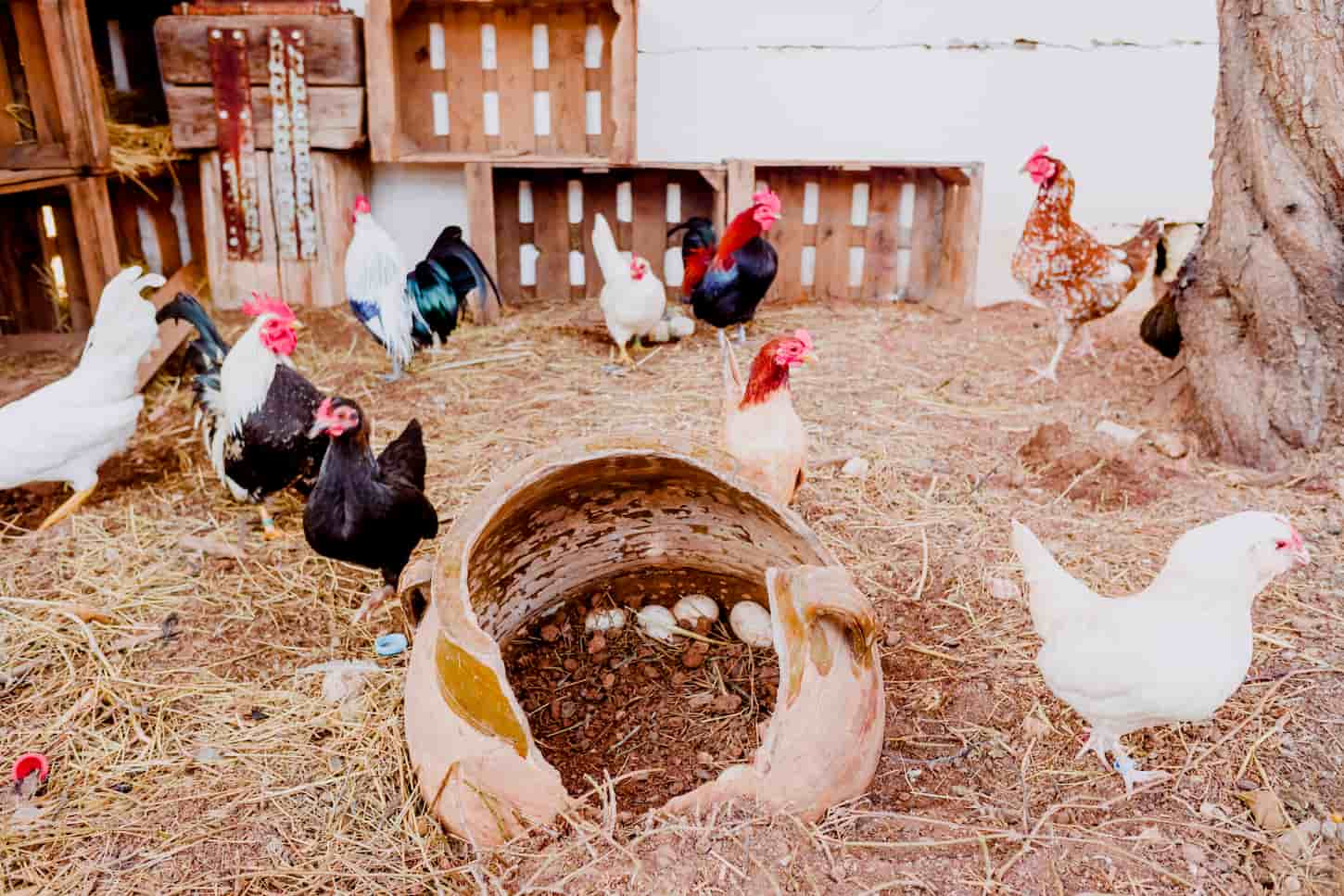
At What Age Can You Determine Chicken Gender?
A chicken’s gender can be determined early, as shortly after hatching, if a trained professional uses the right method. Always use an appropriate sexing method based on the chick’s age and health.
There are many ways and methods to determine chicken gender at different ages. Depending on the chick’s breed and age, use the appropriate method to determine the gender.
Different methods are used when the chick is one day old or four weeks old. Sometimes we’ll have to call a professional chicken sexer to determine chicken gender, and sometimes we can do it ourselves.
One day old
Chicks can be sexed at a day old. The best way to sex a chick at this age is via the vent method, though in some breeds, the feather method can also be used.
The fact that day-old chicks can be reliably sexed is amazing. I’m so glad someone does this professionally so I can pick out cute, sexed chicks with a more than 90% certainty that I got a hen and not a rooster.
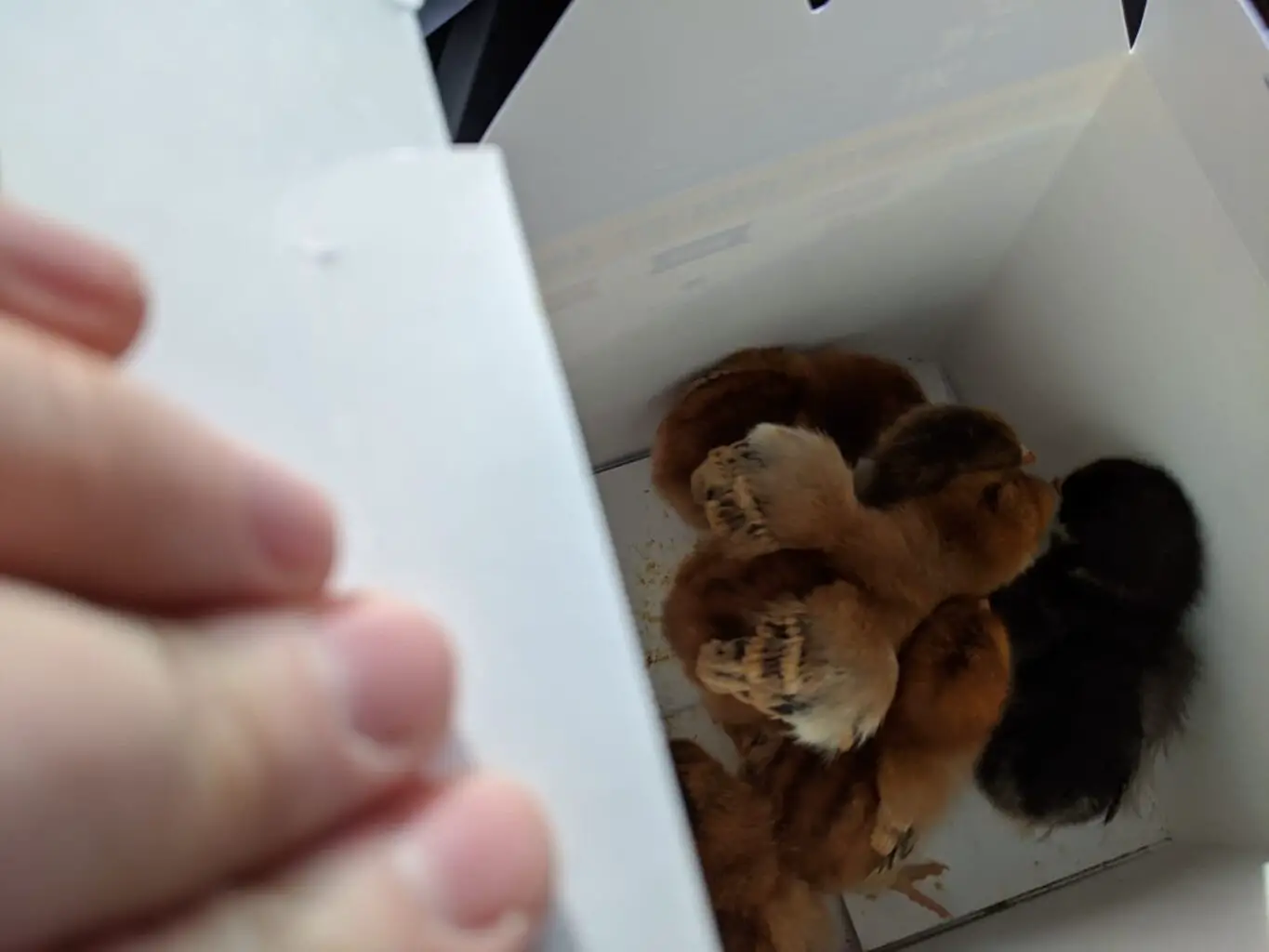
One week old
When the chick is one week old, we can use two methods of chicken gender identification: the vent and/or the feather-based method.
As we said before, the vent and feather methods are best used when the chick is one day old, especially with the feather sexing method.
The venting method is the most accurate; only a high-trained chicken sexer can do this. Otherwise, you can hurt your chick permanently. The feather sexing method can be used by an amateur, but be extremely careful and gentle.
Four weeks old
Chicks are growing fast. Around four weeks of age, they are reaching their adolescent period. We amateurs can tell a chick’s gender in this stage by its feathers.
Okay, so for your first round of chicks, you may have difficulty telling at this stage. But by your second or third round of chicks? You’ll know who’s who.
By weeks four and five, the chick’s fluffy looks start to disappear, and feathers begin to grow. Fun fact – the chick is becoming a teenager.
We’ll see new feathers on the chick. The wattles and combs in male chicks are larger and brighter than in females. The male chicks have larger tails and pointed saddle feathers. Chicken owners will soon start noticing these changes.
Eight weeks old
As the chick grows older, it’s easier to determine its gender. At this stage, a chick’s feathers and behavior are the best way to decide whether or not it’s a rooster or a hen.
Here is how to identify an eight-week-old chick.
- Tail and back feathers are more pointed in male chicks than in females. Males also have longer, more colorful tails than females, depending on the breed.
- The most apparent indicator of a male chicken is brighter and longer combs and wattles. Also, male chickens start showing off by standing tall and showing their chest. Let’s not forget another obvious indicator, and that is the size. Males are bigger than female chickens.
- Around this age, male chickens start to crow. Prepare to hear your first cock-a-doodle-do!
By 8 weeks old, it’s obvious which chickens are male or female.
This is why I’m glad many farm and livestock stores that sell chicks have a “rooster box,” where you can take those roosters that slipped on by. The store will rehome or otherwise handle the roosters for you.
No, I didn’t ask what that means. (It probably means soup.)
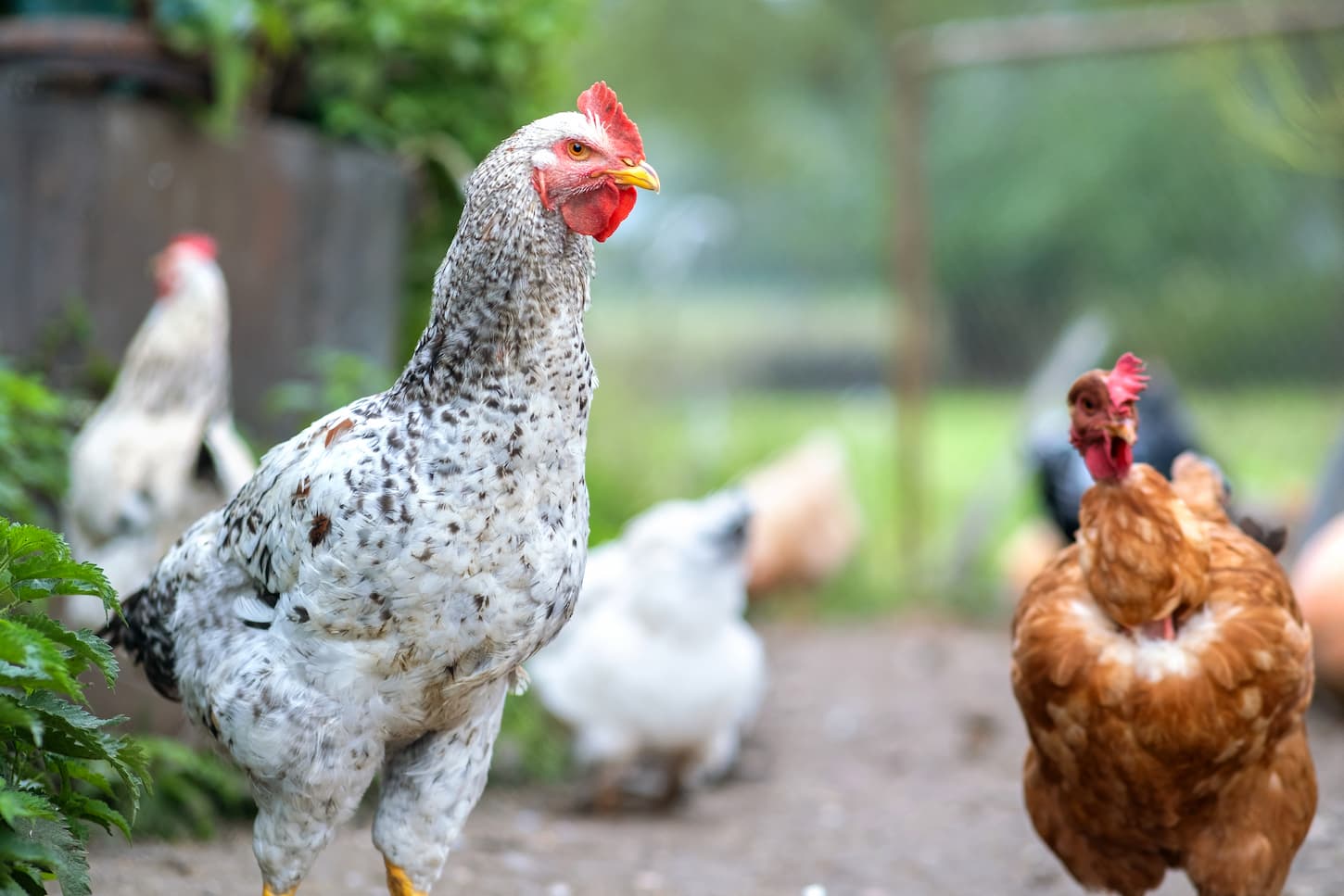
What Breeds Can Be Sexed at Birth?
The breeds that can be sexed at birth are autosexing breeds. Autosexed breeds have males born a noticeably different color than females. Because males and females are known different colors, telling the males from the females is easy.
The most well-known and common autosexing breed is the Cream Legbar. This breed also lays blue eggs. Males have a yellow mark on the head and generally light yellow coats, while females have dark and yellow stripes on the body.
Barred Plymouth Rock chickens are another autosexing breed. They have white marks on their head. The difference is that males have much bigger marks than females. The females also have darker down than the males.
Bielefeld chickens have similar spots to Barred Plymouth Rocks chicks. What they also have is a chipmunk stripe that goes down their back. In females, this stripe is dark brown.
We can also differentiate from Orpingtons, Rhode Island Reds, and Buckeyes because male chicks have a white mark on their wing.
Welsummers, Dark Cornish, and Silver Leghorn female chicks have darker heads, while males have a more out-of-order pattern.
Sexing chickens is a subtle skill, and thanks to autosexing breeds and their different physical characteristics at birth, it makes the process a little easier.
Can You Determine the Chicken’s Gender While It’s in an Egg?
There has been a scientific breakthrough at the University of Leipzig on determining the chicken’s gender while it’s in an egg. This new method requires a hole in the eggshell (later filled) and a laser, so it is not widely used.
Technology is moving fast. Only a few years back, the answer to this question would have been a definite no. Don’t get me wrong – there are a lot of folk methods to determining the gender of an egg. However, none of them have great odds of success.
A professor at the University of Leipzig, Dr. Maria-Elisabeth Krautwald-Junghanns, and her colleagues discovered a method to determine chicken gender while still in the egg on day three of the incubation. At this point, the embryo doesn’t feel any pain. So, how is this possible?
A tiny, almost invisible hole is made with a laser in the eggshell. The laser creates a light pattern, and scientists can examine the inside of the egg. After, they seal the hole. You can read the full study here – it’s nerdy but awesome. I did, however, summarize it pretty well for you.
This is a fascinating discovery!
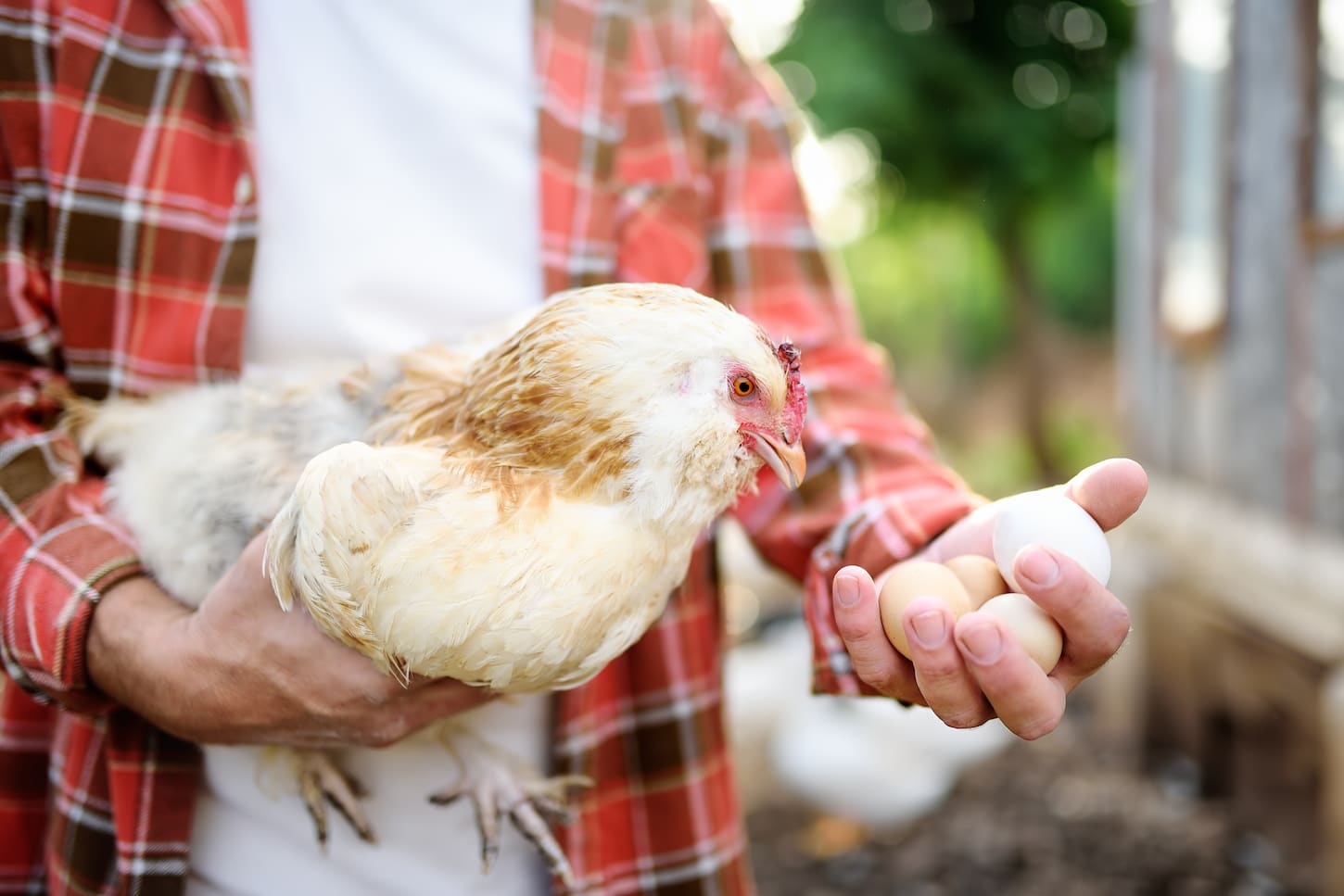
Chicken Sexing Methods Best for Backyard Homesteaders
The best chicken sexing methods for backyard homesteaders is the feathering method and determining the chick’s secondary sex features. Backyard homesteaders can also rely on a professional’s assessment via the vent method.
Repetition is the mother of learning – as you can see, we didn’t put the vent method as the go-to chicken sexing method for backyard homesteaders.
Only the trained chicken sexer can use the vent method on the chick, no one else. The venting method is the most reliable and accurate, so leave it to the professionals.
Other methods, like the feathering method, can be used with caution. This isn’t a complicated learning method, but it shouldn’t be taken for granted. Be gentle with baby chicks, and everything will be fine.
The safest way to determine chicken gender is their secondary sex features when they are older. There are several ways to do that: comb and wattles, feathers, size, and behavior.
For newbies in chicken sexing, we suggest starting with the secondary sex features first, then with the feathering method.
Identifying the chicken’s sex isn’t an easy task, but it isn’t an impossible one. Choose the method carefully and if needed, consult with a professional.
Key Takeaways and Next Steps
Hopefully, this guide gave you some insight into chicken genders and sexing chicks. Not all methods are appropriate for baby chicks, and especially not for the beginner homesteader. Sometimes, it’s better to consult with an experienced chicken sexer so the chicks can grow safe and sound.
However, if we’re curious and have time, we can experiment with safe chicken sexing methods. We’ll learn much about our little yellow (and other colors) fluffy friends.
That all being said, if you don’t want to rely on sexing the chickens yourself, here’s my best piece of advice for you: buy sexed chicks in person from your local livestock provider.
That way, you’ll be able to know that the chicks were properly checked by a professional. You’ll have good odds (they usually list the odds right on a sign next to the chicks) that you’re getting the right gender of chicken. And you’ll have someone you can visit in person if you need it.
Once you’re more familiar with raising chicks, you can branch out into getting eggs, day-old chicks delivered, or whatever else you want to do.
But for starting out? Start in-person. Start local. And start with sexed chicks, so you know what you’re (most likely) getting yourself into.
And make sure you read this article next – and before you bring any chicks home: How Long Do Chicks Need a Heat Lamp? Guide With Pictures.
Resources
Learning from your own experience is essential, but learning from others is also intelligent. These are the sources used in this article and our research to be more informed as homesteaders.
- Countryside Magazine. “How to Tell the Sex of Baby Chicks.” Backyard Poultry, 10 Jan. 2022, backyardpoultry.iamcountryside.com/chickens-101/how-to-tell-the-sex-of-baby-chicks.
- Coops, Backyard Chicken. “Chicken Sexing: Who Is Who?” Backyard Chicken Coops, www.backyardchickencoops.com.au/blogs/learning-centre/chicken-sexing-who-is-who. Accessed 31 Aug. 2022.
- Damerow, Gail. “What Is Feather Sexing? Separating Fact from Myth.” Cackle Hatchery, 22 Sept. 2017, www.cacklehatchery.com/what-is-feather-sexing-separating-fact-from-myth.
- Daniels, Tim. “Autosexing Poultry.” Poultrykeeper.Com, 20 July 2021, poultrykeeper.com/poultry-breeding/autosexing-poultry.
- Daniels, Tim. “Sexing Chicks: How to Sex Chicks.” Poultrykeeper.Com, 28 June 2021, poultrykeeper.com/incubation-brooding/sexing-chicks.
- Galli, R., Preusse, G., & Krautwald-Junghanns, M. E. et al. (2018, February 23). Sexing of chicken eggs by fluorescence and Raman spectroscopy through the shell membrane. PLOS ONE. Retrieved October 4, 2022, from https://journals.plos.org/plosone/article?id=10.1371/journal.pone.0192554
- Mormino, Kathy Shea. “How to Sex Chickens: Male or Female, Hen or Rooster?” Kathy Shea Mormino, 20 June 2019, the-chicken-chick.com/how-to-sex-chickens-male-or-female-hen.
- Star Milling Co. “Learn the Many Chicken Breeds Available For Your Backyard Flock!” Star Milling Co., 21 Mar. 2022, starmilling.com/poultry-chicken-breeds.
- “What Is Sexing, Autosexing, and Sex-Linked?” My Pet Chicken, www.mypetchicken.com/backyard-chickens/chicken-help/What-is-sexing-autosexing-and-sex-linked-H336.aspx. Accessed 31 Aug. 2022.